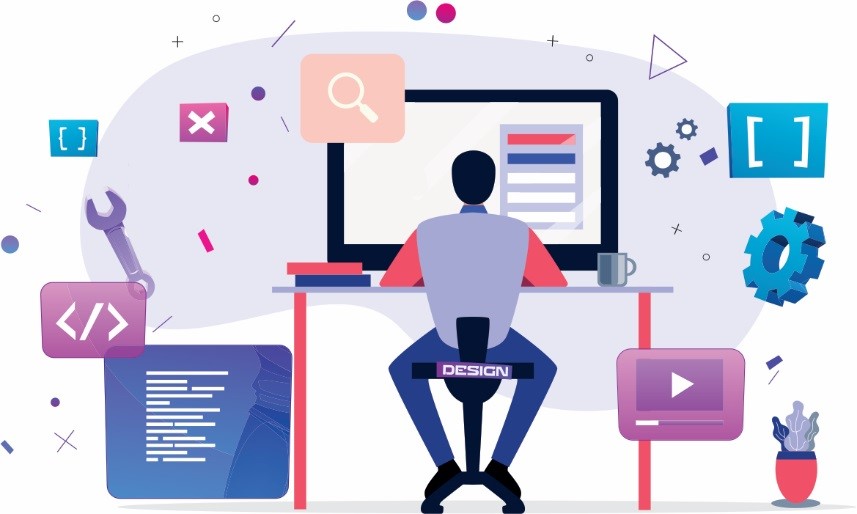Devoted Developers vs. In-House Teams: Which Is Right for You?
The decision between utilizing devoted developers and keeping an in-house team is a substantial one that can impact the trajectory of your tasks and total service method. Conversely, internal groups contribute to a cohesive business culture and a nuanced understanding of long-lasting goals.
Recognizing Dedicated Developers
The expanding demand for specialized skills in the tech market has actually resulted in the appearance of devoted developers as a viable service for many organizations. These specialists are generally acquired on a project basis, enabling companies to leverage details competence without the long-term dedication related to full-time hires. Dedicated programmers are commonly embedded within a customer's group, offering flexibility and scalability to fulfill project demands.
This design enables companies to access a worldwide ability swimming pool, which is especially useful in a quickly progressing technical landscape. Devoted designers can be sourced from numerous geographical places, making certain that business can discover the ideal skill established at competitive prices. They frequently bring a wealth of experience and knowledge, having worked with diverse jobs across various industries.
Moreover, dedicated programmers can focus solely on the tasks handy, boosting performance and performance. They are geared up to incorporate flawlessly into existing workflows, working together closely with in-house groups to attain job goals. This strategy not only decreases the concern of employment and training but likewise permits companies to continue to be agile, adjusting swiftly to transforming market demands and technological advancements.
Benefits of In-House Teams

Furthermore, in-house teams have a tendency to have a deeper understanding of the firm's mission, values, and goals. This positioning can improve staff member engagement and motivation, as employee really feel more linked to their job and the organization's success. Additionally, having a dedicated internal group enables far better alignment of methods and purposes, as these participants are continually concentrated on the business's top priorities.
Internal teams also assist in quicker decision-making procedures, as they can respond more rapidly to challenges and adjustments. The recognized relationships and familiarity with business methods permit streamlined workflows and decreased miscommunication. Ultimately, the mix of a cohesive culture, alignment with business objectives, and efficient interaction makes internal groups a valuable asset for lots of organizations, specifically those seeking to cultivate long-lasting development and innovation.
Price Considerations
When reviewing price factors to consider, both dedicated designers and internal groups present distinct monetary effects for companies. Engaging specialized programmers typically entails a pay-per-project or per hour price design, which can be affordable for organizations with fluctuating project needs. This technique permits for flexibility in scaling sources up or down, making sure that firms only spend for the services they need.
On the other hand, in-house groups entail dealt with costs, consisting of incomes, benefits, and overhead costs such as workplace and equipment. While this design provides higher control and instant accessibility of sources, it may result in higher long-lasting expenditures, particularly if the work does not validate a full-time team.
Additionally, companies should consider the hidden prices linked with employment and training of in-house employees, which can better stress budget plans. In many cases, the time and resources invested in handling an internal group can interfere with the company's core organization objectives.

Job Management and Versatility
Project administration and adaptability are crucial aspects that influence the choice in between in-house groups and dedicated programmers. Dedicated groups typically have actually established procedures for managing projects effectively, leveraging specific methods like Agile or Scrum, which promote repetitive progress and flexibility.

Eventually, the selection in between devoted developers and in-house teams depends upon the wanted level of flexibility and the specific task monitoring requirements. Companies need to review their functional dynamics, job intricacy, and resource availability to determine which alternative aligns best with their calculated goals.
Making the Right Option
Selecting the appropriate advancement method-- internal teams or committed designers-- calls for a cautious analysis of various aspects that straighten with a firm's critical goals. nearshore software development. Consider the nature of the job. If it demands specialized abilities or a fast scale-up, dedicated programmers may be a lot more suitable. On the other hand, in-house teams can provide better connection and integration with existing personnel.
Next, assess your budget. Devoted programmers commonly provide an affordable remedy for short-term tasks, while internal teams might sustain greater lasting expenditures because of salaries, advantages, and overhead costs. Examine the level of control and partnership wanted; in-house teams normally promote stronger communication and placement with business society.
Furthermore, take into consideration the time framework. If prompt outcomes are necessary, dedicated developers can be onboarded rapidly, whereas constructing an internal team takes time for recruitment and training. Lastly, consider the long-lasting vision of your organization. Investing in an internal group may generate better returns over time if continuous development is crucial. Eventually, the decision rests on a complete analysis of these elements, making sure positioning with your company's functional requirements and general goals.
Verdict
In final thought, the choice between in-house groups and specialized developers hinges on task needs and like it organizational objectives. Alternatively, internal teams grow a natural culture and much deeper placement with long-lasting goals.
The decision between making use of dedicated designers and preserving an internal group is a substantial one that can impact the trajectory of your tasks and general organization approach.Project monitoring and flexibility are critical variables that influence the option in between committed designers and in-house groups. offshore software development.In comparison, in-house teams might succeed in preserving a consistent project monitoring framework due to their experience with the organization's society and long-lasting goals. Committed designers often offer an affordable solution for short-term jobs, while internal groups may incur higher long-lasting expenses due to incomes, advantages, and overhead costs.In verdict, the decision between internal teams and devoted designers pivots on task needs and business purposes